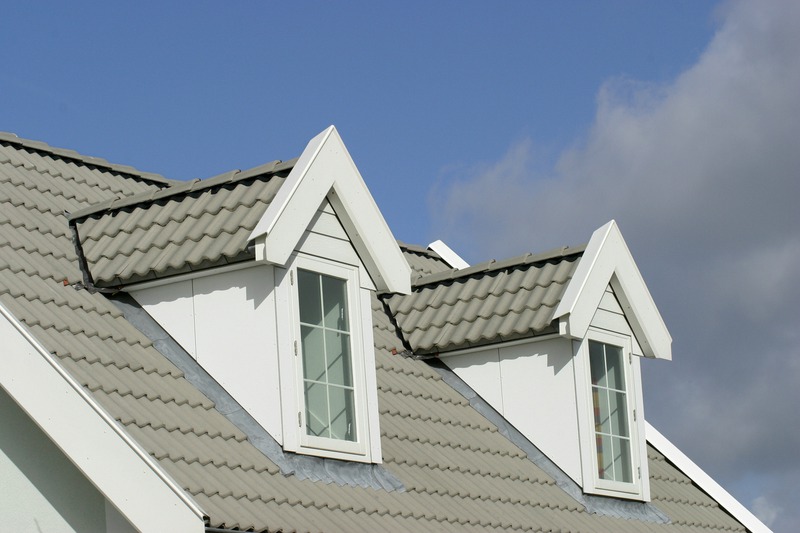In today’s eco-conscious world, finding ways to reduce energy consumption is on everyone’s mind. One area where homeowners can make a significant impact is through their choice of roofing materials. Energy-efficient roofing not only lowers utility bills but also enhances the overall comfort of your home. Let’s take a closer look at some of the best options out there.
Why Energy-Efficient Roofing Matters
Energy-efficient roofing materials help maintain a stable indoor temperature by reflecting more sunlight and absorbing less heat compared to traditional materials. This can greatly reduce cooling costs in hot climates and, in some cases, even affect heating needs in colder areas. In turn, this means less reliance on air conditioning and heating systems, leading to a lower carbon footprint.
Cool Roofs for Cooler Homes
Cool roofs are designed to reflect more sunlight and absorb less heat, making them an ideal choice for areas with abundant sunshine. They can be made from a variety of materials, including special reflective paints, sheet coverings, and reflective tiles or shingles. The biggest advantage of cool roofs is their effectiveness in reducing heat buildup, leading to a cooler home interior and a significant decrease in energy usage.
Metal Roofing Go with the Shine
Metal roofing has become a popular choice for those aiming for sustainability. These roofs are made from materials like aluminum, steel, and copper, which are known for their durability and recyclability. Metal roofing options often come with reflective coatings that increase their energy efficiency by deflecting sunlight. The longevity of metal roofs also contributes to their eco-friendliness, as they can last up to 50 years or more with proper care.
Benefits of Metal Roofing
-
Highly durable and long-lasting
-
Recyclable materials
-
Reflective coatings are available for additional energy savings
Tile Roofing for Traditional Elegance
Tile roofs offer an elegant, traditional look and excellent energy efficiency. Typically made from clay or concrete, these tiles provide natural insulation properties. They also allow for air circulation underneath, which contributes to keeping your home cooler. Their longevity is similar to that of metal roofing, making them a sustainable option.
Advantages of Tile Roofing
-
Excellent insulating properties
-
Long-lasting and durable
-
Variety of styles and colors
Green Roofs Nature Meets Function
For those who wish to take sustainability to the next level, green roofs present an exciting option. These living roofs are covered with vegetation, which helps absorb rainwater, provides insulation, and even creates a natural habitat for wildlife. Although they require more maintenance than traditional roofs, their benefits in urban settings, especially, can be significant.
Perks of Green Roofs
-
Natural insulation and temperature regulation
-
Reduced stormwater runoff
-
Improved air quality and urban biodiversity
Homeowners interested in installing energy-efficient roofs may want to consult roofing contractors in Chandler. Their expertise can help them choose the best eco-friendly options for their specific needs.
Asphalt Shingles with a Twist
While standard asphalt shingles are not known for energy efficiency, technological advancements have led to the development of cool asphalt shingles. These are designed with specially engineered granules that provide better reflectivity, thereby enhancing energy performance while maintaining the classic look that many homeowners desire.
Features of Cool Asphalt Shingles
-
Improved heat reflectivity
-
Available in various colors and styles
-
Affordable and widely available
If you are seeking advice from roofers in Tempe could facilitate the decision-making process. They can help determine whether cool asphalt shingles are the right fit for your home and climate conditions.
Rubber Roofing It’s Not Just for Tires
Rubber roofing, often seen in the form of EPDM (ethylene propylene diene terpolymer), offers a sustainable and durable option. Known for its flexibility and resilience, rubber roofing effectively resists extreme weather conditions. It also provides good insulation, which can lead to energy savings over time.
Synthetic Roofs the Future of Efficiency
Synthetic roofing materials, such as those mimicking slate or wood, offer the appearance of traditional styles but with added energy benefits. These materials are often lighter and can be made with reflective coatings that increase their efficiency. While they might be more expensive initially, their performance and durability can make them a worthy investment.
Key Benefits of Synthetic Roofs
-
Variety of aesthetic options
-
Energy-efficient coatings available
-
Lightweight yet durable
Finding the right roofing solution can be a challenge, but Scottsdale roofing professionals are well-versed in energy-efficient solutions. They can provide valuable insights tailored to your home’s needs and regional weather patterns.
Choosing the Right Roofing for You
When selecting an energy-efficient roof, consider factors like climate, budget, and maintenance levels. Some options are more suitable for certain climates, while others might offer aesthetic qualities that align with your home’s design. Consulting with professional roofing experts can provide personalized guidance.
Final Thoughts
Energy efficiency is more than just a buzzword; it’s a principle that can greatly impact your home’s comfort and your environmental footprint. By exploring various energy-efficient roofing options, you can make a selection that best fits your needs, location, and lifestyle. From metal to green roofs, the choices are vast. Talk to local professionals to find the perfect match for your home.

